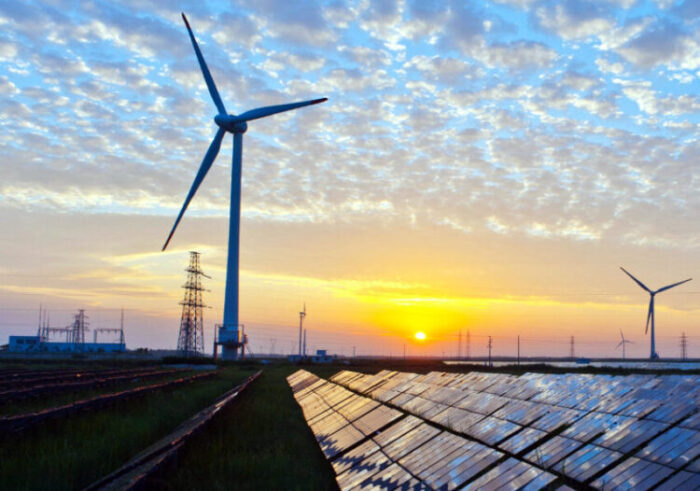The renewable energy revolution is transforming our power systems—but to unlock its full potential, we must upgrade our grid infrastructure. As more solar panels and wind turbines come online, the challenge is no longer just about generating clean energy, but about connecting it reliably to homes, businesses, and industries. In this article, we explore the technical and policy imperatives for deploying advanced grid infrastructure, current challenges, and cover leading countries setting the standard for efficient grid integration.
Data source: International Renewable Energy Agency
Upgrading the Grid Infrastructure
Modernizing the electricity grid is far more complex than simply laying new wires. It requires designing smart, flexible systems that not only transmit but also manage variable flows of renewable energy. Successful grid modernization involves extensive upgrading of aging distribution networks, deploying digital sensors and real-time data analytics, and integrating energy storage solutions to buffer fluctuations. According to recent insights from the International Energy Agency, a secure energy transition depends on enhancing grid and storage readiness, as inadequate grid connections remain a critical bottleneck for renewable energy uptake.
Data source: International Energy Agency
The Technical Challenge: Aging Infrastructure and Material Needs
Grids are the arteries of modern electricity systems, but many are decades old. In advanced economies, more than 50% of grid infrastructure is over 20 years old. This aging system poses significant safety, reliability, and efficiency challenges, particularly as grids are pushed to accommodate a surge in renewable power. Achieving net zero requires adding or refurbishing over 80 million kilometers of grid lines by 2040 — a monumental task when current global investment has stagnated at around USD 300 billion per year. Moreover, supply-chain constraints, such as the recent 70% price increase in key materials like GOES for transformers, add pressure to modernizing grids quickly.
Data source: International Energy Agency
Challenges in Deployment
Several hurdles stand in the way of rapid grid modernization:
- Aging and Underinvested Infrastructure: Many grids, particularly in advanced economies, consist largely of outdated assets that require replacement or substantial upgrading. This not only limits capacity but also increases the risk of outages and efficiency losses.
- Regulatory and Coordination Bottlenecks: Large-scale grid projects often require coordination across multiple jurisdictions with varying regulatory frameworks, slowing down deployment.
- Capital and Supply Chain Constraints: The high upfront costs coupled with supply chain bottlenecks—exacerbated by recent global disruptions—challenge timely grid expansion.
- Integration of Distributed Energy and Digitalization: As renewable generation becomes more decentralized, grids must be reconfigured to handle bidirectional energy flows. Digital grid technologies, which now account for roughly 20% of grid investment in advanced economies, are critical for real-time monitoring and flexible operation.
Leading the Way: Best Practices from Top Countries
Several countries have set benchmarks for grid modernization:
- Germany and Denmark have led in installing advanced high-voltage transmission lines and integrating smart grid technologies. Germany’s Energiewende and Denmark’s digital grid controls are prime examples of systems that enhance renewable integration and balance regional supply-demand variabilities.
- China stands out by rapidly expanding its transmission networks with over 710,000 km of new lines built in the past decade, driven by a strong focus on UHV projects. This investment has not only supported its massive renewable energy rollout but also ensured grid reliability in a market that now connects diverse resource-rich regions.
- The United States and Australia are also making strides. The U.S. has demonstrated significant progress with targeted investments—in 2022, for example, it invested around USD 90 billion in grid upgrades, reflecting a growing commitment to modernization despite historical underinvestment.
Investments in Renewable Energy Infrastructure
Data source: International Renewable Energy Agency
Interconnecting Grids to Accelerate Renewables Integration
Modern grids aren’t isolated networks; they are increasingly interconnected systems. International interconnections, such as the North Sea Link between Germany and Norway, facilitate cross-border energy trade and help balance renewable energy surpluses and shortages. Meshed HVDC offshore grids—linking offshore wind farms with multiple jurisdictions—are poised to revolutionize how clean energy is shared and stored. These interconnections not only enhance grid resilience and reliability but also contribute to lowering emissions and reducing reliance on fossil fuels.
Data source: International Energy Agency
A Data-Driven Future for Grid Connections
Looking ahead, advanced grid technologies and digital solutions are set to reduce operating costs by an additional 10–15% over the next decade. However, achieving these benefits requires coordinated action. Policy makers must update regulatory frameworks to streamline grid planning, incentivize private-sector investments, and address supply chain bottlenecks. Furthermore, training a skilled workforce to manage and maintain these modernized grids is essential for long-term success.
The future of renewable energy hinges on upgrading our grid infrastructure to be as smart, robust, and flexible as the energy technologies it supports. Without significant investment in grid modernization, including interconnections, digitalization, and new materials, clean energy transitions will stall. Yet, countries like Germany, Denmark, China, and the United States provide inspiring roadmaps for how to overcome these challenges.





